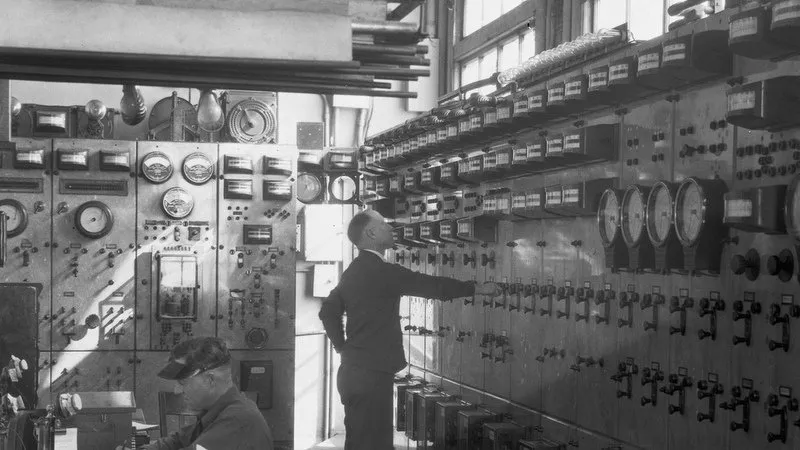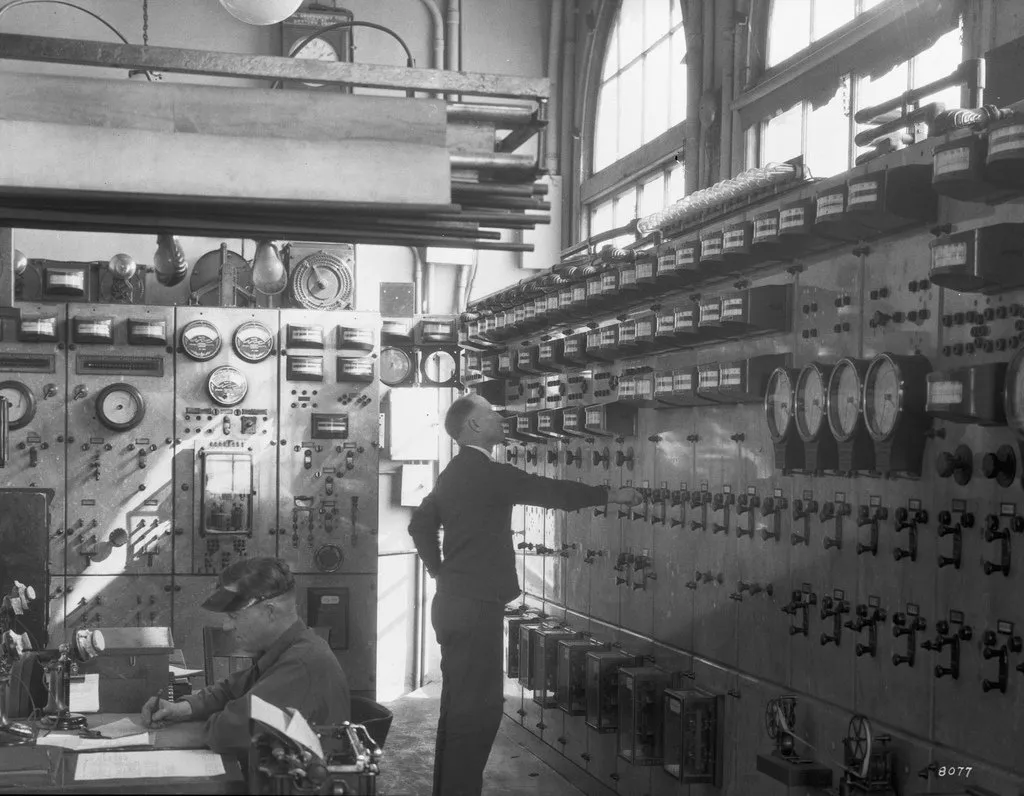
A short circuit is
an abnormal condition of relatively low resistance between two points of differing potential in a circuit, usually resulting in a flow of excess current. TheFreeDictionaryThe purpose of the short circuit study is to determine the fault current available at the various buses on your system. These are worst-case single and three phase bolted faults. With this information you can determine if your equipment is sized appropriately (or if you are designing a new system, you can size the equipment appropriately) and will not fail during a fault event.

A cool photo of an old control room - Flickr
Why do I need a short circuit study?
A short circuit study is used to determine the worst-case current scenario during a 3 phase and single phase bolted fault. This is critical design information when selecting equipment for a new design, and replacing existing equipment during upgrades. Two factors contributing to the fault current is the size - and impedance - of the transformer supplying the circuit, and the available fault current that can supplied by the utility, and on-site generation. A short circuit study is used to determine the worst-case magnitudes of these currents. These currents will be used as design inputs when purchasing new equipment, and verify that system changes haven't affected the maximum design currents of the equipment. The equipment must be capable of withstanding the maximum short circuit available. When a short circuit occurs, these high currents create strong magnetic forces and if the equipment design hasn't been tested, or braced adequately, for these forces there may be catastrophic failure causing additional damage. Under normal circumstances, panels, switchboards, etc are designed to contain the fault; but this is only to a specific current rating.When should I have a short circuit study completed?

Do you know when you get a short circuit study done?
How do I get one done?
Getting a short circuit study completed is very similar to any power system study as I talked about in a previous post, however there is much less data required to ensure that the output is worst-case values. It is typical to ignore cables during the first iteration of the short circuit study. This lowers the cable impedance throughout the system resulting in higher magnitude fault currents and is used to develop the worst-case scenarios. If these values don't cause any serious design constraints or result in values that are higher than the installed equipment can withstand, this is where the short circuit study will stop. Additionally, if you have a smaller system with a few voltage systems, the short circuit study could be as simple as determining the maximum current your transformers will supply based on an infinte bus. To determine this you only need to know:- transformer size
- system voltages
- transformer impedance
Conclusions
Having a current short circuit study at your facility, regardless of the size, is very important for the safe and reliable operation of the power system. If it is a small building, this will not be difficult, and can likely be completed by hand assuming infinite bus. If you have any questions, about how to have this completed please don't hesitate to contact us. If you liked this article be sure to share with the buttons below and sign up for our newsletter where you will get these posts in your inbox and special offers. Be sure to follow us on Twitter and like our page on Facebook.If you like this article and want to hear more sign up for our newsletter at jmkengineering.com/newsletter